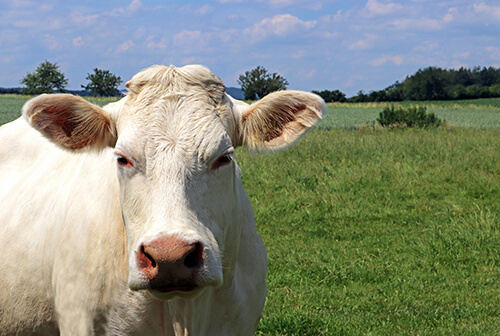Bovine Viral Diarrhea: Background, Management and Control
Aug 10, 2020

What is Bovine Viral Diarrhea?
Bovine Viral Diarrhea (BVD) is a disease of cattle caused by the Bovine Viral Diarrhea Virus (BVDV). The virus is widespread and most herds are at risk for infection. In a susceptible herd, BVD can be a serious, costly disease.
What signs do I look for?
The signs of BVD vary, depending on the immune status of the exposed animals and the strain of the infecting virus. The incubation period is about three to five days. If susceptible (non-vaccinated) animals are infected with a virulent strain of the virus, the disease will likely appear as an acute, severe sickness, with bloody diarrhea, high fever (105–107 degrees), off- feed, mouth ulcers, and often pneumonia. Some infected animals may die, while others will recover, usually within one or two weeks. Occasionally an animal will die very quickly, before other signs are apparent. Since BVD is a viral disease, antibiotics are ineffective.
How does it affect pregnant animals?
If pregnant animals recover, they may abort about 2 to 4 weeks after exposure, especially if they are in the second trimester of pregnancy. Those exposed in the first trimester may experience early embryonic death, while open cattle may fail to conceive and return to heat. Some cows, if exposed between approximately 60 and 120 days of pregnancy, may not lose their fetus, but rather may go on to deliver a persistently infected (PI) carrier calf. For the rest of its life this PI carrier calf will shed lots of BVD virus that can then infect other animals.
How do I prevent it?
When cattle are well vaccinated (as is more common today) and not heavily stressed, the disease is usually much less severe, and often the only visible signs are sporadic abortions and/or repeat breeding. However, vaccinated cows exposed to the virus between approximately 60 and 120 days of pregnancy may still occasionally produce persistently infected carrier calves.
Bovine Viral Diarrhea (BVD) is a disease of cattle caused by the Bovine Viral Diarrhea Virus (BVDV). The virus is widespread and most herds are at risk for infection. In a susceptible herd, BVD can be a serious, costly disease.
What signs do I look for?
The signs of BVD vary, depending on the immune status of the exposed animals and the strain of the infecting virus. The incubation period is about three to five days. If susceptible (non-vaccinated) animals are infected with a virulent strain of the virus, the disease will likely appear as an acute, severe sickness, with bloody diarrhea, high fever (105–107 degrees), off- feed, mouth ulcers, and often pneumonia. Some infected animals may die, while others will recover, usually within one or two weeks. Occasionally an animal will die very quickly, before other signs are apparent. Since BVD is a viral disease, antibiotics are ineffective.
How does it affect pregnant animals?
If pregnant animals recover, they may abort about 2 to 4 weeks after exposure, especially if they are in the second trimester of pregnancy. Those exposed in the first trimester may experience early embryonic death, while open cattle may fail to conceive and return to heat. Some cows, if exposed between approximately 60 and 120 days of pregnancy, may not lose their fetus, but rather may go on to deliver a persistently infected (PI) carrier calf. For the rest of its life this PI carrier calf will shed lots of BVD virus that can then infect other animals.
How do I prevent it?
When cattle are well vaccinated (as is more common today) and not heavily stressed, the disease is usually much less severe, and often the only visible signs are sporadic abortions and/or repeat breeding. However, vaccinated cows exposed to the virus between approximately 60 and 120 days of pregnancy may still occasionally produce persistently infected carrier calves.